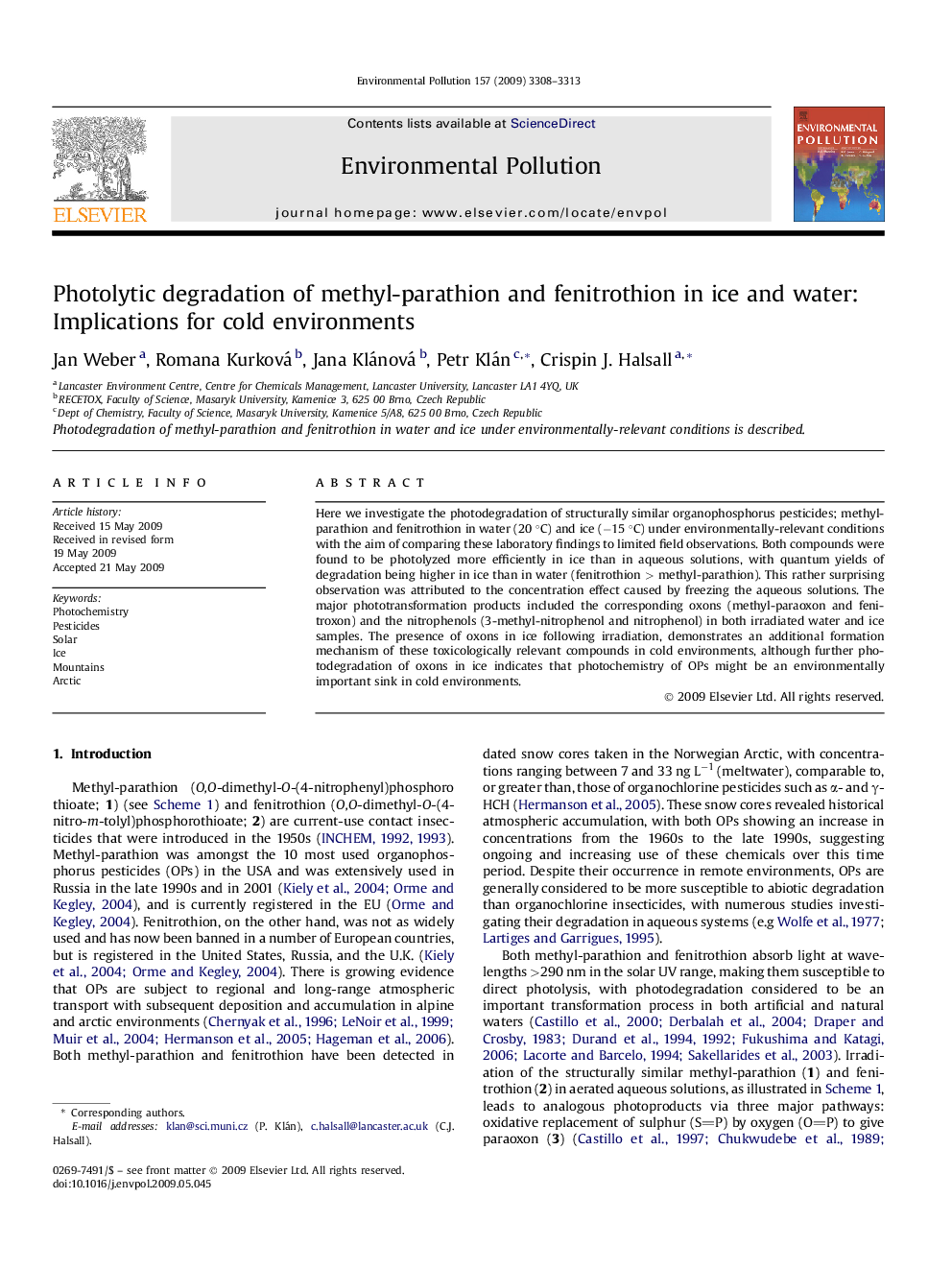| Article ID | Journal | Published Year | Pages | File Type |
|---|---|---|---|---|
| 4426019 | Environmental Pollution | 2009 | 6 Pages |
Here we investigate the photodegradation of structurally similar organophosphorus pesticides; methyl-parathion and fenitrothion in water (20 °C) and ice (−15 °C) under environmentally-relevant conditions with the aim of comparing these laboratory findings to limited field observations. Both compounds were found to be photolyzed more efficiently in ice than in aqueous solutions, with quantum yields of degradation being higher in ice than in water (fenitrothion > methyl-parathion). This rather surprising observation was attributed to the concentration effect caused by freezing the aqueous solutions. The major phototransformation products included the corresponding oxons (methyl-paraoxon and fenitroxon) and the nitrophenols (3-methyl-nitrophenol and nitrophenol) in both irradiated water and ice samples. The presence of oxons in ice following irradiation, demonstrates an additional formation mechanism of these toxicologically relevant compounds in cold environments, although further photodegradation of oxons in ice indicates that photochemistry of OPs might be an environmentally important sink in cold environments.
